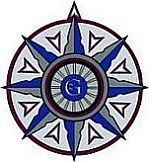See page 7 at this Link for Hydroflame Furnace wiring diagrams; a little tough to read:
http://www.docstoc.com/docs/20282417/Hy ... ace-Manual
The BLK wire goes to Ground [Battery Negative]. The RED wire goes to +12 VDC [to power the Furnace] and to one 'side' of the Thermostat. The WHT wire goes from the other side of a 2 wire Thermostat back to the Furnace and closes a Fan Control Relay to start the heat cycle. The RED and BLK wires carry ~8 Amps or so, so match the size of those cut wires. An internal Circuit Breaker prevents over-current draw. The WHT wire carries low current; only enough to energize the coil of the Fan Relay. Don't attempt to run a heavy RED wire to the Thermostat. Wirenut thinner wires off of the heavier RED wire connection made directly to the Furnace +12 VDC and 'back' to the Fan Relay WHT wire connection. You likely know this already. Schematics can be misleading if someone else takes them literally. Big Box stores sell small diameter Thermostat wire, or recycle what's laying around [Telephone or Doorbell wire, etc.].
If the Normally Open [N.O.] Sail switch is closed because the working Fan is creating a draft, AND the Normally Closed [N.C.] Limit Switch is not open due to over-temperature [usually due to Fan failure], the Module on the Schematic right side will open the Gas Control Valve. It will also fire the Ignitor [which resembles a fine wire Spark Plug] to ignite the Propane. Pretty standard, electromechanical control 'stuff' used for years, and identical to the Furnace in my '83 Avion, as well as the Hydroflame Furnace in a borrowed Tent Trailer. In older Furnaces, a Normally Open snap switch Sensor closes to confirm the Gas is lit by sensing a hot plenum or combustion chamber. This closure provides +12 VDC to the Control circuitry. If the Thermostat still calls for heat, this N.O. Sensor will open and close as the Fan 'cools' it down to closure. This cycles the Propane flame on and off in some Furnaces. In newer Furnaces, a Sensor confirms lit Propane to the Control Board for safety and for flame cycling. 'Dinosaur Electronics', for one, sells P.C. Boards to prevent older Furnaces from continuous, Battery-draining attempts to light the Flame when a Propane Tank is empty. Their Board tries 3 times and quits until +12 VDC is power-cycled and reset. Good folks.
http://www.dinosaurelectronics.com/
You can hook up the RED and BLK wires to a +12 VDC Battery or Power Supply/Charger for bench testing. Manually connect the WHT wire through a ~2 Amp Fuse if you like - for electrical short protection - to the RED wire +12 VDC. This will simulate a Thermostat closing and calling for heat. Safely hook up a Propane Bottle to see that the Furnace actually works and heats prior to installation in tight quarters. Consider cleaning up various contacts before installing the Furnace. Pink pencil erasers clean up PC Board 'fingers' well. Non-metallic 'Scotch-Brite' or disposable 'orange' fingernail files work well on 'burnishing' old Relay contacts or other tight connections. Suspect N.O. and N.C. Sensors can be tested by heating them with a match while connected to only an Ohmmeter.
Many Home Digital Thermostats run off of +24 VAC control voltage from a Transformer - sometimes mounted outboard to the Furnace - stepped down and rectified internally to low voltage DC. These internally-powered Home Thermostats won't work with this Furnace. Use a good ole mechanical, bimetal Thermostat without a level-sensitive Mercury Switch, or a Digital Thermostat made for +12 VDC RV applications.
This Website tells me that plenty of folks are trying to troubleshoot a Furnace, so this is why I supply the operating details above:
http://www.rvmechanic.com/current_categ ... _full.html
http://www.google.com/search?hl=en&q=hy ... =&gs_rfai=
Congrats on scoring the great Trailer stuff!


